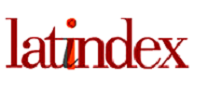Hiperión como novela epistolar
DOI:
https://doi.org/10.5216/sig.v33.65574Palabras clave:
Hölderlin, Cartas, BildungsromanResumen
El objetivo del presente artículo es abordar la interrelación entre el género epistolar y el Bildungsroman en Hiperión, de Friedrich Hölderlin. Sus características como novela epistolar son congruentes con sus características como Bildungsroman, por lo que se encuentra justificado el género epistolar. De tal forma, el elemento de intimidad, la necesidad de un interlocutor y el tratamiento fragmentario del tiempo propios de la novela epistolar son funcionales a la formación del protagonista y del lector y al manejo temporal inherentes al Bildungsroman, respectivamente. Se analizarán ambos géneros (teórica y específicamente en la novela) y las mencionadas características en Hiperión.
Descargas
Citas
ALTMAN, Janet. Epistolarity. Approaches to a Form. Columbus: Ohio State University Press, 1982.
COCALIS, Susan. The Transformation of “Bildung” from an Image to an Ideal, Monatshefte, vol. 70, núm. 4, p. 399-414, invierno de 1978.
DILTHEY, Wilhelm. Vida y poesía. México: Fondo de Cultura Económica, 2016.
FRAANJE, Maarten. The Epistolary Novel in Eighteenth-Century Russia. Múnich: Sagner, 2001.
FRANZEL, Sean. The Politics and Media of Apostrophe in Hölderlin’s Hyperion, The German Quarterly, vol. 82, núm. 2, p.155-173, primavera de 2009.
FUERST, Norbert. Three German Novels of Education. I. Hölderlin’s “Hyperion”, Monatshefte, vol. 38, núm. 6, p. 339-347, octubre de 1946.
HOFFMEISTER, Gerhart. From Goethe’s Wilhelm Meister to anti-Meister Novels: The Romantic Novel between Tieck’s William Lovell and Hoffmann’s Kater Murr. En MAHONEY, Dennis (ed.). The Literature of German Romanticism. Nueva York: Camden House, 2004. p. 79-99.
HÖLDERLIN, Friedrich. Hiperión o el eremita en Grecia. Trad. y pról. de Jesús Munarriz Peralta. Madrid: Ediciones Hiperión, 1996.
HORLACHER, Rebekka. ¿Qué es Bildung? El eterno atractivo de un concepto difuso en la teoría de la educación alemana, Pensamiento Educativo. Revista de Investigación Educacional Latinoamericana, vol. 51, núm. 1, p. 35-45, 2014.
JOST, François. Variations of a Species: The Bildungsroman, Symposium: A Quarterly Journal in Modern Literatures, vol. 37, núm. 2, p. 125-146, diciembre de 2014.
KOVAL, Martín. Vocación y renuncia: La novela de formación alemana entre la Ilustración y la Primera Guerra Mundial. Buenos Aires: Editorial de la Facultad de Filosofía y Letras de la UBA, 2018.
MAHONEY, Dennis. The Apprenticeship of the Reader: The Bildungsroman of the “Age of Goethe”. En HARDIN, James (ed.). Reflection and Action: Essays on the Bildungsroman. Columbia: University of South Carolina Press, 1991, p. 97-117.
MILES, David. The Picaro’s Journey to the Confessional: The Changing Image of the Hero in the German Bildungsroman, Modern Language Association, vol. 89, núm. 5, p. 980-992, 1974.
REDFIELD, Marc. The Phantom Bildungsroman. En _________. Phantom Formations. Aesthetic Ideology and the Bildungsroman. Ithaca: Cornell University Press, 1996, p. 38-62.
SAMMONS, Jeffrey. The Bildungsroman for Nonspecialists: An Attempt at a Clarification. En HARDIN, James (ed.). Reflection and Action: Essays on the Bildungsroman. Columbia: University of South Carolina Press, 1991, p. 26-45.
SILZ, Walter. Hölderlin’s Hyperion. A Critical Reading. Filadelfia: University of Pennsylvania Press, 1969.
SPANG, Kurt. La novela epistolar. Un intento de definición genérica, RILCE: Revista de Filología Hispánica, vol. 16, núm. 3, p. 639-656, 2000.
STEPHENSON, Roger. The Novel in Weimar Classicism: Symbolic Form and Symbolic Pregnance. En RICHTER, Simon (ed.). The Literature of Weimar Classicism. Rochester: Camden House, 2005, p. 211-235.
SWALES, Martin. Irony and the Novel: Reflections on the German Bildungsroman. En HARDIN, James (ed.). Reflection and Action: Essays on the Bildungsroman. Columbia: University of South Carolina Press, 1991, p. 46-68.
TODOROV, Tzvetan. Literatura y significación. Barcelona: Editorial Planeta, 1971.
Descargas
Publicado
Cómo citar
Número
Sección
Licencia
Derechos de autor 2021 Signótica

Esta obra está bajo una licencia internacional Creative Commons Atribución-CompartirIgual 4.0.
Autoras (s) autorizan a Signótica a publicar artículo, si es aceptado, firmando su contribución como original y no sometida a otra editorial para publicación. En caso de aceptación y publicación, artículos de Signo tienen licencia Creative Comons BY-NC-ND (Asignación + NoComercial + SemDerivaciones)





1.png)





